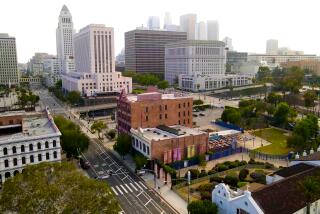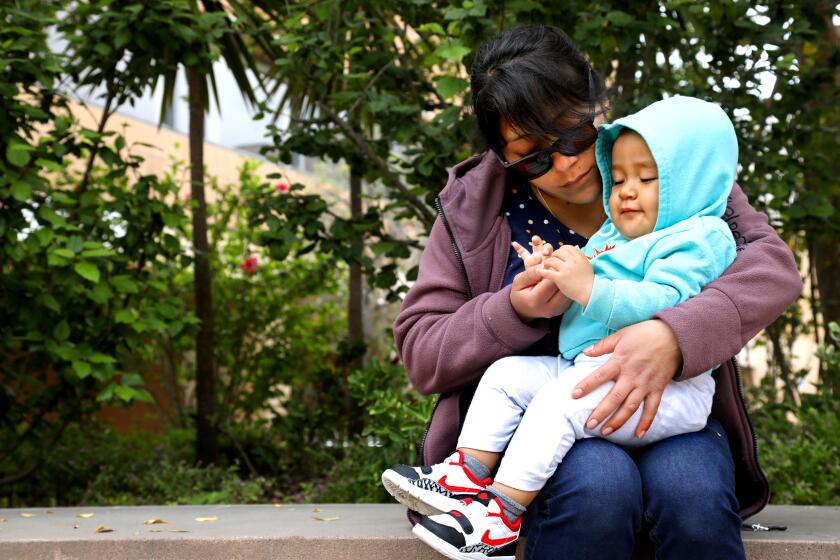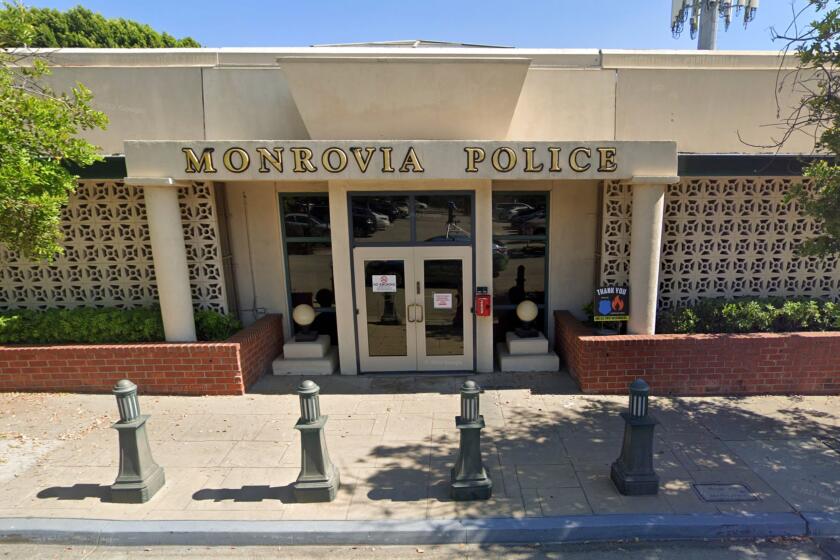Homeless Census Comes Up Short Where It Counts
Just hours after the last white-vested census workers turned in their tally sheets Wednesday, South Bay activists for the homeless said they believe the first national census of homeless people counted fewer than one in 10 in this area.
“It’s an impossible thing to count,” said Amanda Aldrich, a social worker who helped gather the homeless together to be surveyed. “I’d say we counted 10%, at best, of who’s really out there.”
Some of the homeless who did come forward to be counted on Tuesday night said reality may be even more dismal than that.
“Heck, I could find you 20 or 30 people today who weren’t there (to be counted) last night,” said Ron, 32, an out-of-work roofer who lives in Alondra Park. “Illegals, mentally unstable, whatever their reasons, they just don’t want to come out and be hassled.”
Although disappointed at the statistical results, South Bay Homeless Coalition leaders said they believe the effort was worthwhile.
“Before this, we had city officials and police departments telling us there were no homeless in their cities,” Aldrich said. “Now, we’ve gone to their perception of zero to something, anyway.”
On Wednesday morning, still bleary-eyed from the exhausting count of the night before, advocates for the homeless and a few of the people they assist gathered at Alondra Park to talk about the census.
Their comments were subdued and cautious. Now that the census is over, they said, they must turn their attention to how the new statistics will be used.
Comprehensive numbers will not be released for at least a year, but unofficial reports from census workers as they left individual sites indicated that 187 homeless people were counted in Torrance, Hermosa Beach, Redondo Beach, Lawndale, Lomita and Gardena. Sixty-seven more were counted at the Beacon Light Mission in Wilmington. Numbers from other shelters and soup kitchens from San Pedro to Inglewood will remain a secret until the census issues its initial reports in April, 1991.
When those numbers do come out, homeless advocates will be watching closely to see how they are used.
“If these numbers are used as the basis for funding, we’re in trouble,” Aldrich said. “That’s our biggest fear. . . . The homeless mentally unstable were not there, and they’re the ones who need the most help. The illegal aliens were not there. So many, for so many reasons, are not in those numbers.”
South Bay homeless advocates were so certain that the numbers would fall short that they filed a formal protest of the census before the count ever took place.
Noting that the homeless population’s “key to survival is invisibility,” South Bay Homeless Coalition members asked that the number of those counted be multiplied “by a significant factor.”
The homeless in much of the rest of Los Angeles County were counted at existing shelters and soup kitchens, but there are few such facilities in the South Bay.
So members of the coalition created eight “clustering sites” at churches and community centers where people could gather and be counted.
Census workers counted 187 people at the eight sites, scattered through Torrance, Redondo Beach, Hermosa Beach, Lawndale, Lomita and Gardena.
The long wait for workers to arrive, however, reduced the numbers, volunteers said.
“At least 17 people said they were going outside for a cigarette and never came back,” said Michele May, the coalition’s chairwoman, who was at the Alondra Park United Methodist Church, where 36 of the 187 homeless people were counted. “They got restless. It’s hard to ask them to show up and just wait for hours.”
One man, who identified himself only as Frank, arrived at the church early in the evening but soon began to wonder why so many of his friends had not shown up. He left the church to encourage others to join the count, but by the time he returned with two homeless friends, the census workers already had come and gone.
Thus the three men were never counted.
“It will just be some more statistics,” Frank said. “It won’t do any good.”
One homeless man walked up to a Wilmington shelter after census workers had arrived and the doors had been closed behind them. He knocked and asked to be counted, but a shelter worker told him he would not be admitted.
“I think they are going about this the wrong way,” said the man, who identified himself only as Dave. “They should have the people out front, not locked away inside. . . . I give them credit for the effort, but trying to do it in one night makes you think they are not that serious.”
Carl Bailey, regional census manager in San Pedro, acknowledged that the numbers coming in were lower than he had expected.
“I guess we all expected to find more, but they did not materialize,” he said. “It seems apparent from our debriefing of the enumerators that there were a lot of people taking off, who did not want to be counted. They had to count people running away.”
Most census officials, however, concerned themselves on Tuesday night and Wednesday morning only with making sure their efforts were as thorough as possible.
“It’s not up to me to judge how accurate the count is,” said Harold Chavis, regional census manager for Inglewood. “That’s for someone else to do. My job is to go out and count.”
South Bay census workers fanned out from regional centers in Inglewood and San Pedro, stopping first at shelters and the coalition’s clustering sites before regrouping for an early morning sweep through public areas where homeless people are known to sleep.
In several areas, pairs and trios of census workers trooped up and down beaches from 2 a.m. to 4 a.m., peering through the darkness for telltale mounds indicating people sleeping on the sand, while others poked through public parks.
For the most part, such efforts were fruitless. Many teams came back without counting a single person.
On Wednesday morning, homeless people laughed at such efforts.
“You don’t lie out in the open, waiting for someone to roust you,” said Roger, 50, who has called a parking lot near Alondra Park home for the past six years. “The worst thing you can do is look homeless. You do that, (police) are on you like flies to peanut butter.”
An Alondra Park man named Al agreed.
“You’re not going to find anyone if you don’t know where to look,” he said.
Even when census workers did find people to survey, language sometimes created a barrier.
In Inglewood, two Spanish-speaking workers dropped out at the last minute.
“Between the two of us, with a few Como se llama s ? and Cuantas personas?, we got through it,” said Ann Potter, who last studied Spanish before her graduation from Purdue University in 1949. Her partner, Emma Nickola, had taken a single Spanish course at Los Angeles Trade Technical College.
Language also posed a problem for about 25 Latino men who showed up at Alondra Park at 10 a.m. on Tuesday, insisting that a Spanish-language newspaper had said census workers would be there to count them.
A homeless resident of the park who had been helping publicize the count tried to keep them there until the evening, when the count was scheduled to take place.
“They went out and panhandled enough money to buy beer, but the party didn’t last long enough,” said May, the coalition chairwoman. “They took off in the afternoon. . . . I don’t know if any of them were counted.”
Those who were counted said they were pleased to help but doubted the government’s sincerity.
“They are doing this because it is a good show, good politics,” said Gerald Greene, who talked to census workers at the Beacon Light Mission in Wilmington. “But what are they going to do once they have counted people? Nothing, I’ll bet.”
More to Read
Start your day right
Sign up for Essential California for news, features and recommendations from the L.A. Times and beyond in your inbox six days a week.
You may occasionally receive promotional content from the Los Angeles Times.






